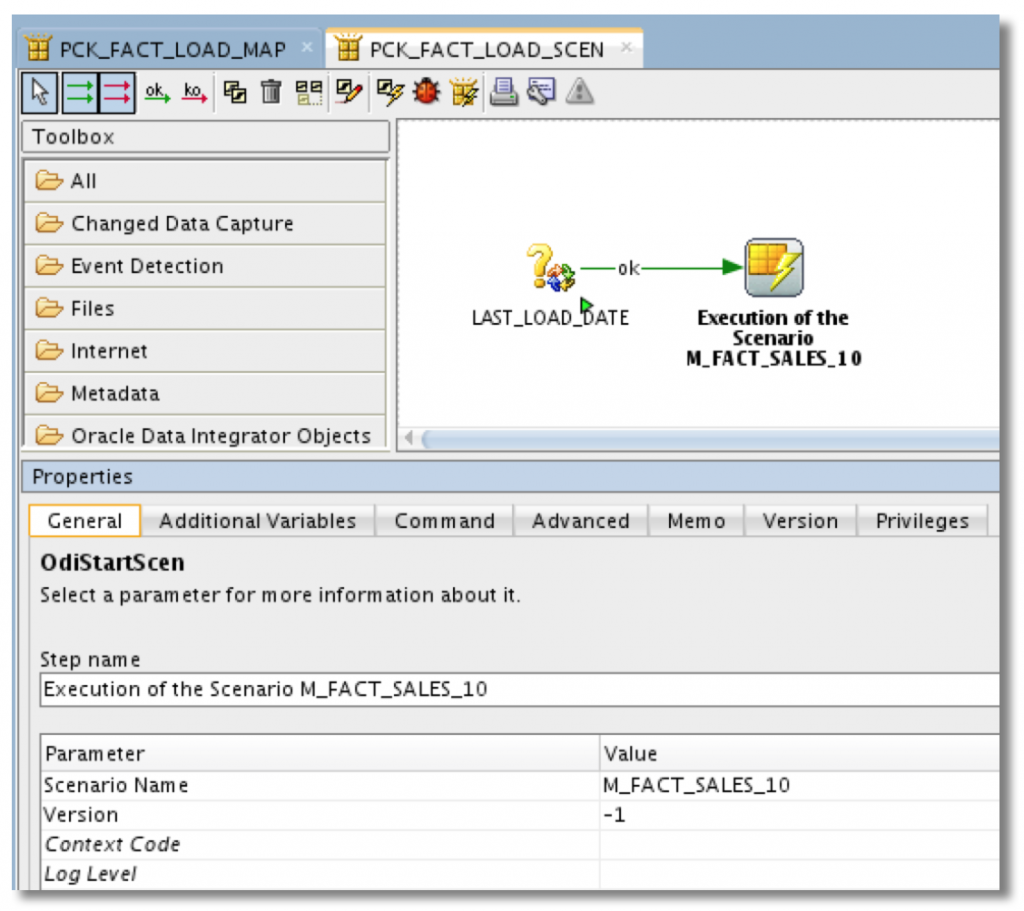In Oracle Data Integrator (ODI), interfaces and packages are important components used to define and orchestrate data integration processes. Let’s explore how interfaces and packages work in ODI:
- ODI Interfaces:
- An interface in ODI represents a data integration flow between a source and a target. It defines the operations required to extract data from the source, transform it, and load it into the target.
- Interfaces are typically built on top of mappings, which define the data flow and transformations.
- To create an interface, right-click on the “Interfaces” folder in the Designer Navigator and select “New Interface.”
- Specify a name and an optional description for the interface.
- In the interface editor, drag and drop the desired mappings onto the canvas to define the flow of data.
- Configure the source and target datastores for each mapping in the interface.
- Optionally, you can add additional steps such as pre- and post-load tasks, error handling, and auditing to the interface.
- Save the interface and validate it to ensure correctness.
- Interfaces can be executed to perform the data integration process by right-clicking on the interface and selecting “Run” or using the Execute button on the toolbar.
- ODI Packages:
- A package in ODI provides a way to organize and sequence multiple interfaces, procedures, and other tasks into a single unit of work.
- Packages allow you to define the dependencies and execution order of the objects within them.
- To create a package, right-click on the “Packages” folder in the Designer Navigator and select “New Package.”
- Specify a name and an optional description for the package.
- In the package editor, you can add interfaces, procedures, variables, and other tasks to the package.
- Arrange the objects in the package in the desired execution order by dragging and dropping them.
- Configure variables, control options, and error handling for the package.
- Save the package and validate it to ensure correctness.
- Packages can be executed as a whole, which triggers the execution of the objects contained within them, by right-clicking on the package and selecting “Run” or using the Execute button on the toolbar.
- Package Sequences and Control Options:
- ODI packages allow you to define the execution sequence of objects within the package using package sequences.
- Package sequences define the order in which the objects are executed, and they can include conditional branching and looping.
- Control options in packages provide additional flexibility in defining the behavior of the package, such as error handling, parallelism, and restartability.
- You can configure control options at the package level or at individual object levels within the package.
- Versioning and Deployment:
- ODI provides versioning and deployment capabilities for interfaces and packages.
- You can manage different versions of interfaces and packages, track changes, and promote them across different environments using ODI’s version control and deployment features.
- This ensures proper governance and control over the development and deployment of data integration processes.
By working with ODI interfaces and packages, you can design, orchestrate, and execute complex data integration processes while maintaining flexibility, reusability, and manageability.
SHARE
